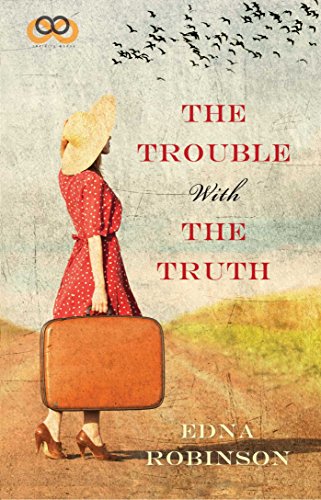The Trouble with the Truth
This coming-of-age tale plunges us, like delighted house guests, into the midst of a family so eccentric and charming that we wish we never had to leave. Starting in 1928, nine-year-old Lucresse Briard lives in a series of homes with her family – her quirky, art-dealer father; her charismatic, fun-loving brother, in whose schemes she invariably plays sidekick; their priggish, devoted houseman; the aunt who frets over their unconventional upbringing. Surrounded by strong personalities, and without a mother to guide her, how is a girl to find herself? For Lucresse, whose mother died giving birth to her, self-identification is less a search than an invention, as she makes up outlandish tales about her family life to impress her schoolmates. As she matures, though, she finds that some truths can’t be avoided, a discovery that leads her, ultimately, to her true self.
Harper & Row optioned this novel after Edna Robinson, an advertising copywriter, won critical acclaim with its opening chapter. Shortly before publication, however, To Kill a Mockingbird burst onto the literary scene, and Harper dropped Robinson’s book, saying the market for books about single dads with two kids was now glutted.
Robinson put the manuscript away, but now, 25 years after her death, the world has the chance to read about the remarkable Briard family in a book edited by the author’s daughter. It’s not a perfect tale – the narrative, like one of Lucresse’s own fabrications, at times stretches the limits of credulity. But The Trouble With the Truth is a fast-paced, entertaining read, both amusing and poignant, and suitable for both adults and YAs. The real trouble is that its author never lived to see it published.










